The best time to visit Italy and Greece for sightseeing is spring or fall, either side of the hot summer. On the other hand, if you’re exploring the Mediterranean and want guaranteed beach weather, the peak of summer, July and August, is a great time to visit either country.
The Mediterranean season is getting increasingly longer as destinations aim to attract tourists year-round. The winter months are also a good time to visit either Greece or Italy for museums and galleries, which will be blissfully quiet.
Greece and much of Italy enjoy a typically Mediterranean climate, with hot, dry summers and mild winters. There’s considerable climate variation between the very north of Italy, where the climate is continental, with much cooler, wetter winters, and the southernmost parts of Greece, which are hot and dry. So plan your visit according to what you want to see and do.
Visiting Italy & Greece by Season
Summer
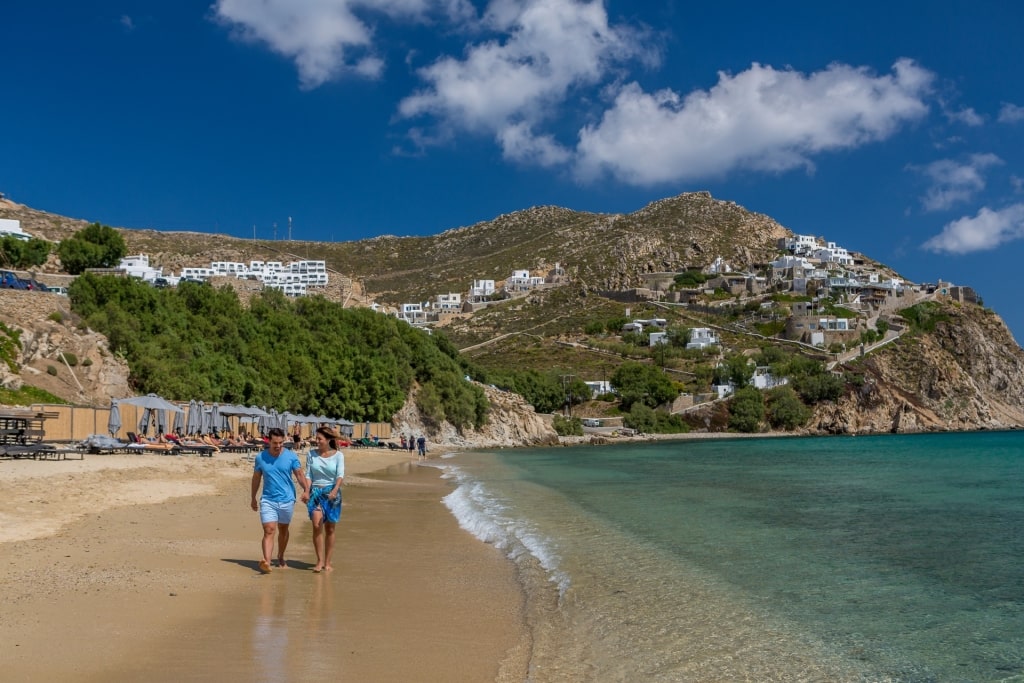
Elia Beach in Mykonos, Greece
Summers in Greece and Italy, on the mainland of each and in islands including Sicily, Sardinia, Mykonos, and Santorini, are hot and dry; July and August are the hottest months of the year in both countries. Expect average highs of 83.3°F (28.5°C) in Athens in August and 78.6°F (25.9°C) in Santorini.
Italy is marginally cooler than the Greek mainland; in Naples, the average high is 79°F (26.1°C). Rome, which lies inland, is very hot in August; average highs are 78.1°F (25.6°C), but there is no cooling sea breeze.
Whether you are visiting Italy or Greece, or both, you’ll have a more enjoyable visit if you pace yourself and take a siesta during the hottest part of the day. Remember to factor in beach time, too.
June is an easier month for sightseeing and it’s also a little less busy, as European school summer vacations haven’t started.
Fall
Fall is arguably the best time to go to Italy and Greece, as temperatures into September remain balmy, with the sea deliciously warm after being heated by the sun for the whole summer.
In the Greek Islands and on the mainland, the tourist season extends to mid or late October. After this time, the beach clubs on islands like Mykonos close down for the winter. Santorini, however, will still be busy, as its focus is more cultural than beach. Fall temperatures are pleasant; expect average daily highs of 68.5°F (20.3°C) in October.
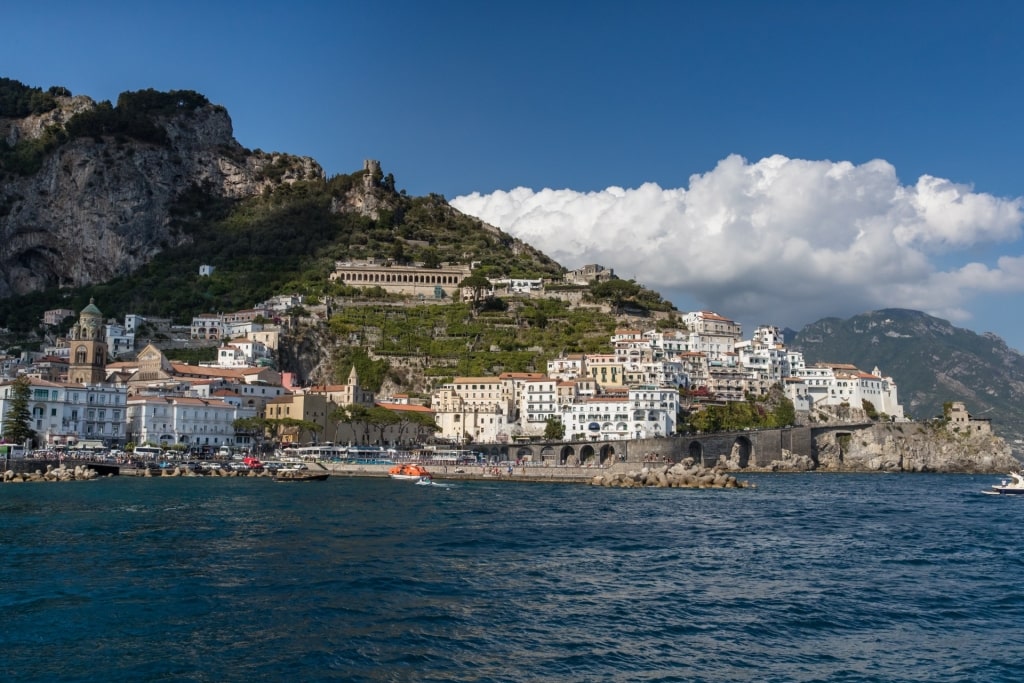
Amalfi Town in Amalfi Coast, Italy
Italy’s beach towns have a shorter season; visitor numbers in the Cinque Terre and further south in the Amalfi Coast drop off in September, and many beach clubs and restaurants close for a break.
But fall is a wonderful time to visit central Italy. September and October coincide with the wine harvest. It’s truffle season, and market stalls are piled high with mushrooms.
By November, fall has well and truly arrived, with Athens seeing average highs of 59.6°F (15.3°C) and Rome, 54.8°F (12.7°C). This is still a good time for city sightseeing as you will have no problem getting into museums and galleries, but you should expect some rain.
Winter
Greece is much quieter than Italy in winter. There is little tourism in the islands in January and February once the December and New Year’s rush is over. Athens, in contrast, is always busy, as it’s the capital city.
Italy’s coastal villages are generally quiet in January and February, although life continues in the big cities. Venice has an especially magical quality in the cool of winter, an ethereal mist often hanging over the lagoon. The famous Carnival takes place any time between late January and early March, depending on when Easter falls, and is a spectacular time to be in the city.
Spring
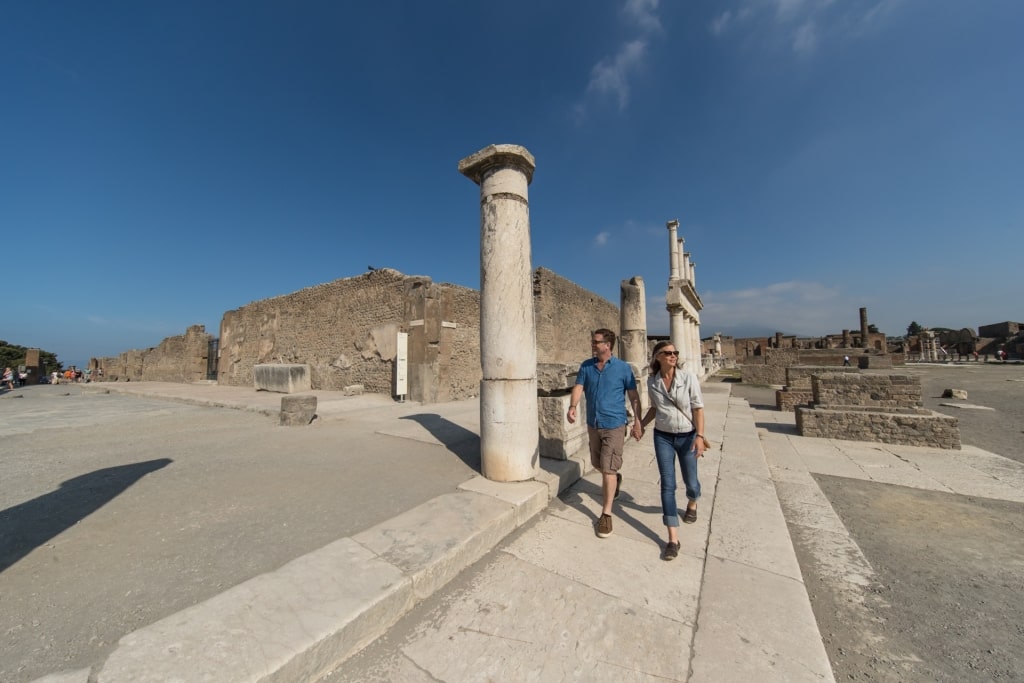
Pompeii, Italy
Spring is arguably the best time to go to Italy and Greece, with wildflowers in bloom and the countryside lush and green. March is still cold and rainy in many places, but by April and May, the days are getting longer and the temperature is rising.
Expect average highs of 66.1°F (19°C) in the southern Aegean by May and 66.1°F (18.9°C) in Naples. This is the perfect time for hiking in Crete or exploring the ruins of Pompeii, near Naples.
Easter is a busy holiday in Europe—note that it will fall on different dates in Italy and Greece. Mainly Roman Catholic Italy uses the Gregorian calendar, while in Greece, the Orthodox faith celebrates Easter some weeks later, according to the Julian calendar, usually in April or May.
When Is Rainy Season?
November to March is the rainiest time in both Greece and Italy. In Greece, December is the wettest month, with an average of 2.4 inches (60mm) of rainfall. Visit around now and you may even see the unusual vision of the Acropolis or the White Mountains on Crete covered in snow.
Italy receives most rain during the winter months, too, although rainfall varies considerably between north and south. In Florence, expect an average of 4.5 inches (115mm) in November, the rainiest month.
Sicily, which is a long way further south, has a different weather pattern with December and January the wettest months, receiving 3.7 inches (95mm) and averaging 12 rainy days. Visit in winter and early spring and the peak of Mount Etna is likely to be covered in snow.
When Is High Season?
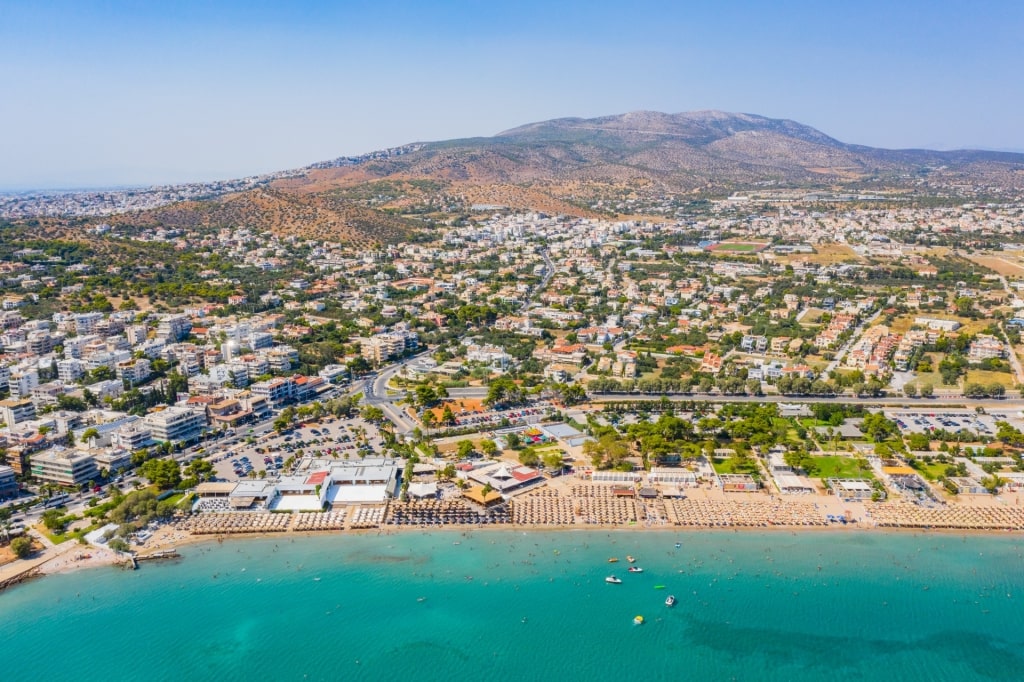
Athens, Greece
Both Italy and Greece experience a busy high season in July and August, when cities are buzzing, beaches are teeming, and everybody is enjoying outdoor living. August is particularly busy on the beaches as it’s the school holiday season in Europe.
The whole of Italy appears to head for the coast, while Greeks make for the Athenian Riviera or escape on the ferries to the islands. Peak season is a time for long, lazy lunches, afternoons on the beach, and late dinners once the heat of the day has faded.
When Is Shoulder Season?
Shoulder season in both Greece and Italy is April and early May, depending on when Easter falls, and then September and October. Any of these months is a good time to visit, although September is best if you want some beach time as the sea is still warm enough for swimming and watersports.
April and May is the best time to visit Greece and Italy for hiking, with wildflowers in bloom all over Southern Europe, and visiting archaeological sites such as Delos, near Mykonos, and Pompeii.
When Is Low Season?
Low season varies depending on where you go, but generally speaking, it’s the cooler, wetter months of November, January, February, and early March. There’s a peak of activity around Carnival in Venice.
December is always busy with Christmas markets, in Italy in particular, and lavish New Year’s celebrations.
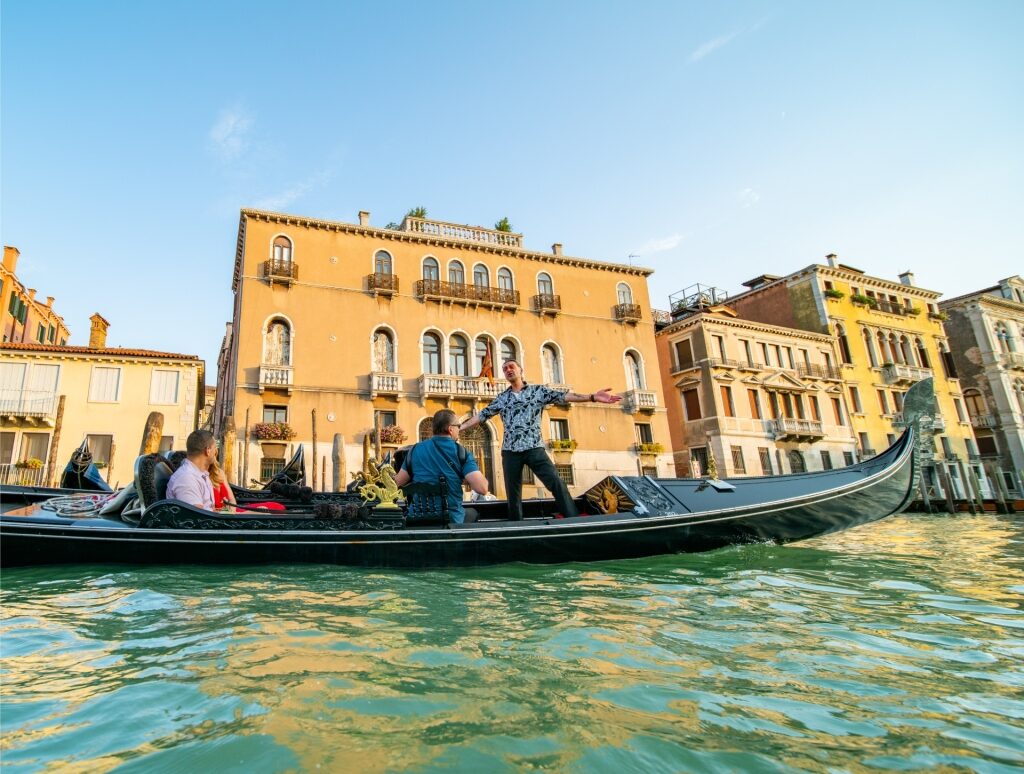
Venice, Italy
Experience the spectacular culture and scenery of Europe on one of Celebrity’s cruises to Italy and Greece.



